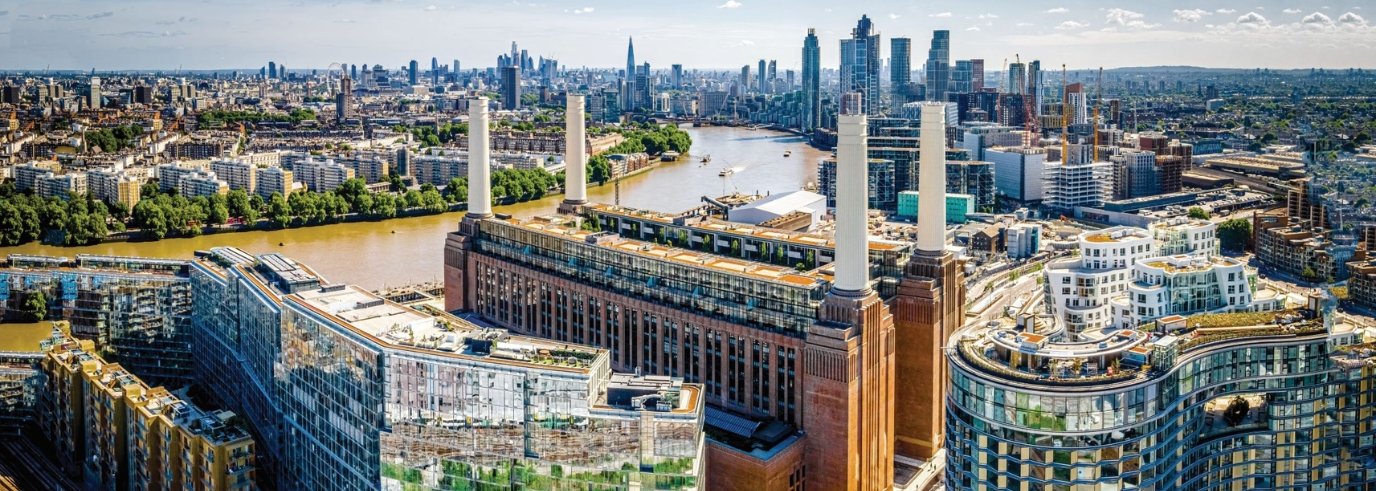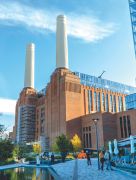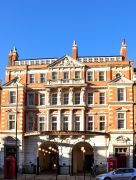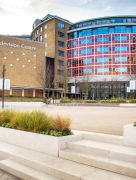
Transforming London’s skyline
We explore some of the city’s iconic landmarks that are being transformed into modern day homes.
31 March, 2023
London’s industrial history makes for a unique selling point when it comes to residential property. They say every home tells a story but some – particularly those that have been converted from a previous use – have quirkier tales to tell than others. Converting commercial buildings into residential property is nothing new; imaginative architects have been transforming utilitarian buildings, such as barns and warehouses, into luxurious private homes since the mid-20th century.
In the past few decades, however, the increased need for housing coupled with a reduced demand for space for industrial use has seen an influx of landmark conversion projects that have been breathing new life into and safeguarding the future of some of London’s most iconic buildings. With their characterful architecture and impressive sense of arrival, it’s little surprise property developers are keen to get their hands on these heritage projects – but intersecting a rich history with the need to modernise can be a challenge.
Battersea Power Station, SW11
Arguably the most iconic transformation of recent years has taken place south of the River Thames at Battersea Power Station. Designed by British architect Giles Gilbert Scott, the Art Deco masterpiece, which opened as a power station in the 1930s, now contains over 100 shops, 46,000 square metres of office space and 254 apartments.
The cultural icon, which produced up to a fifth of London’s power, supplying electricity to the Houses of Parliament and Buckingham Palace, closed in 1983 and remained empty for almost 30 years before it was bought by Malaysian developers, SP Setia and Sime Darby Property in 2012.
Its reimagination by architecture firm WilkinsonEyre has seen the former control rooms restored and converted into events space, the central boiler house converted into office space, now occupied by technology company Apple, and the Grade II building’s iconic 51-metre high chimneys rebuilt with one of the four turned into a visitor attraction, Lift 109. But the most exciting aspect of this transformation is the collection of 254 extraordinary homes that sit within the former switch houses and between the famous chimneys in Boiler House Square – properties that are being marketed around the £3.5 million mark.
While the power station is undeniably the focal point, it is just the beginning of a wider £9 billion project to create a whole new neighbourhood and business district. The complex of new buildings set across 42 acres will provide housing and jobs for up to 25,000 people.

“Each phase of the development is different to the next and the apartments vary hugely in style. Those closest to the river offer impeccable views of the Thames and the London skyline, whilst those situated in the main Boiler Room section ooze industrial chic,” comments Tatiana Neves, Lettings Branch Director at KFH Battersea Park, which has a number of apartments available to rent in the Circus West Village and Electric Boulevard phases of the development. “The development has also brought with it the extension of the Northern Line, which has been of huge benefit to local residents”.
This landmark development has not only created one of London's most exciting new neighbourhoods, but has secured the future of Battersea Power Station as an iconic part of London’s skyline for many more years to come.
The development has also brought with it the extension of the Northern Line, which has been of huge benefit to local residents.
Islington Square, N1
Described by leading design architect Piers Gough of CZWG as “a love letter to the original great post office buildings”, Islington Square is the redevelopment of the former Royal Mail sorting office behind Upper Street consisting of four elaborately embellished classical Edwardian buildings.
A touchstone for all of the post delivered to north London in the early 1900s, the historic buildings have been reimagined as a destination to live and socialise. A vast array of properties is on offer, including studios, apartments, maisonettes and penthouses available to buy (prices starting from £686,000 for a studio) alongside serviced apartments to rent.
There are also 15,800 square metres of diverse commercial and leisure space including a subterranean six-screen cinema, health club, independent restaurants, cafés, concept stores and theatre spaces. A tree-lined boulevard has been incorporated at ground level for public realm, while penthouse residents have access to private roof gardens.

“All of this has been a welcome enhancement to Islington, adding to the plethora of bars and restaurants already in the area and encouraging more visitors from other pockets of London,” comments James Ripp, Sales Branch Director at KFH Islington. “Islington has always been a popular place to invest in due to the sought-after architecture made up of mostly Georgian and Victorian properties, picturesque squares, places to dine and the overall convenience of the area. Islington Square has created another attractive enclave for people to visit or pass through on their daily commute.”
Islington has always been a popular place to invest in due to the sought-after architecture.
Television Centre, W12
When the BBC vacated its former headquarters at Television Centre in 2012, it was only a matter of time before it was transformed into a new West London destination.
Designed by Graham Dawbarn, the distinctive Grade II listed circular Helios building, affectionately known as the 'doughnut', broadcast its first programme on 29 June, 1960, and went on to become a powerhouse of creative broadcasting for the BBC.
Its transformation into a mixed-use development inspired by the original building's mid-century modern style has been led by RIBA Stirling Prize-winning architect Paul Monaghan, who hand-picked a collection of Britain’s finest contemporary architects to help him design the most premium apartments in the scheme, which also benefit from access to a gym and pool run by Soho House.
Not only do residents get to live inside an iconic landmark, but the redevelopment of White City means there are restaurants, cafés, and Westfield London – the largest shopping centre in Europe – on their doorstep.
Television Centre is at the heart of the White City Opportunity Area, a regeneration plan covering 110 hectares, which aims to provide an estimated 6,000 new homes and 10,000 jobs, making White City one of London’s most enviable hotspots for growing businesses.
The redevelopment of London’s landmark industrial buildings shows no sign of slowing down with upcoming projects including the renovation of Millennium Mills, a former flour factory at Royal Victoria Dock, as part of the £3.5 billion regeneration of Silvertown into a new riverside destination. While developments like this can be met with controversy, few can deny the benefits of giving these iconic landmarks a new lease of life.

Here to help
Considering selling or letting your property? Get in touch with your local branch.